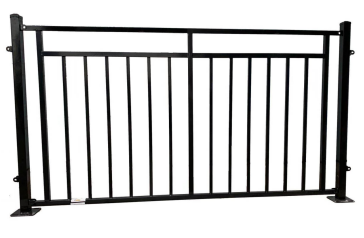-
+86 15030157877
-
sales@galvanizedmetalmesh.com
Oct . 18, 2024 11:39 Back to list
Welded Wire Mesh Solutions for Concrete Construction from Leading Manufacturers
Welded Mesh for Concrete A Comprehensive Overview for Manufacturers
Welded mesh, commonly referred to as welded wire mesh, has emerged as an essential component in the construction industry, particularly in concrete applications. It consists of a grid of metal wires, welded together at intersections, forming a robust and versatile mesh that enhances the integrity of concrete structures. This article explores the significance of welded mesh for concrete, its manufacturing process, benefits, and its role in modern construction projects.
Importance of Welded Mesh in Concrete
Welded mesh is crucial in reinforcing concrete, which is inherently strong in compression but relatively weak in tension. By incorporating welded mesh into concrete elements, engineers can significantly improve the overall tensile strength, flexural resistance, and stability of structures. This reinforcement is particularly vital for floor slabs, walls, beams, and other structural components that experience various stresses and loads during their lifecycle.
The Manufacturing Process
The manufacturing process of welded mesh involves several key steps, ensuring high-quality products tailored to meet diverse construction needs
1. Wire Selection The first step is selecting the right type of wire, commonly made from high-quality steel. The wire is available in various diameters, offering flexibility in designing the mesh for specific applications.
2. Cutting and Bending The wires are then cut to the required lengths. Depending on the design, some wires may need to be bent to create the desired grid pattern.
3. Welding The intersecting points of the wire grid are welded together using automated welding machines. This process ensures that the connections are strong and durable, capable of withstanding the pressures exerted by the concrete.
4. Quality Control After welding, each mesh sheet undergoes rigorous quality checks to ensure it meets the necessary standards. Manufacturers assess factors like weld strength, mesh size, and overall integrity before approving the product for use.
welded mesh for concrete manufacturers

5. Surface Treatment To enhance corrosion resistance, welded mesh is often subjected to surface treatments such as galvanization or coating. These treatments extend the lifespan of the mesh, making it suitable for use in various environments, including those exposed to moisture or chemical agents.
Benefits of Using Welded Mesh
The use of welded mesh in concrete applications offers numerous advantages
- Enhanced Structural Integrity Welded mesh provides uniform distribution of loads across the concrete, reducing the risk of cracking and failure.
- Construction Efficiency The installation of welded mesh is straightforward and time-efficient, allowing for faster project completion.
- Cost-Effectiveness By reducing the amount of concrete needed and minimizing the risk of repairs due to cracking, welded mesh can lead to significant cost savings throughout a project's life.
- Versatility Welded mesh can be customized based on the unique requirements of a project, including dimensions, wire spacing, and coating options. This versatility makes it suitable for a wide range of applications, from residential buildings to large-scale infrastructure projects.
- Sustainability As a recyclable material, welded mesh contributes to sustainable construction practices. Its durability also means that structures can last longer, reducing the need for resources in future repairs or replacements.
Conclusion
In conclusion, welded mesh plays a pivotal role in enhancing the performance of concrete structures. As manufacturers in the concrete industry continue to innovate and adopt advanced technologies, the demand for high-quality welded mesh is expected to rise. By understanding its benefits and incorporating it into construction practices, manufacturers can significantly improve the durability and sustainability of their projects. The future of construction will undoubtedly see welded mesh as a fundamental component, reinforcing not just buildings, but the very foundation of modern engineering.
-
Premium Eco-Friendly Roof Tiles | Affordable & Durable
NewsJul.31,2025
-
Premium Roof Tiles for Durable & Stylish Roofing Solutions
NewsJul.30,2025
-
High-Quality Roof Tiles for Durable & Stylish Roofing Solutions
NewsJul.29,2025
-
High Quality Square Wire Mesh Manufacturer & Supplier for Wholesale
NewsJul.29,2025
-
Premium Roof Tiles for Durable & Stylish Roofing Solutions
NewsJul.29,2025
-
Hexagonal Gabion for Slope Protection & Retaining Walls | Durable Wire Mesh
NewsJul.29,2025



